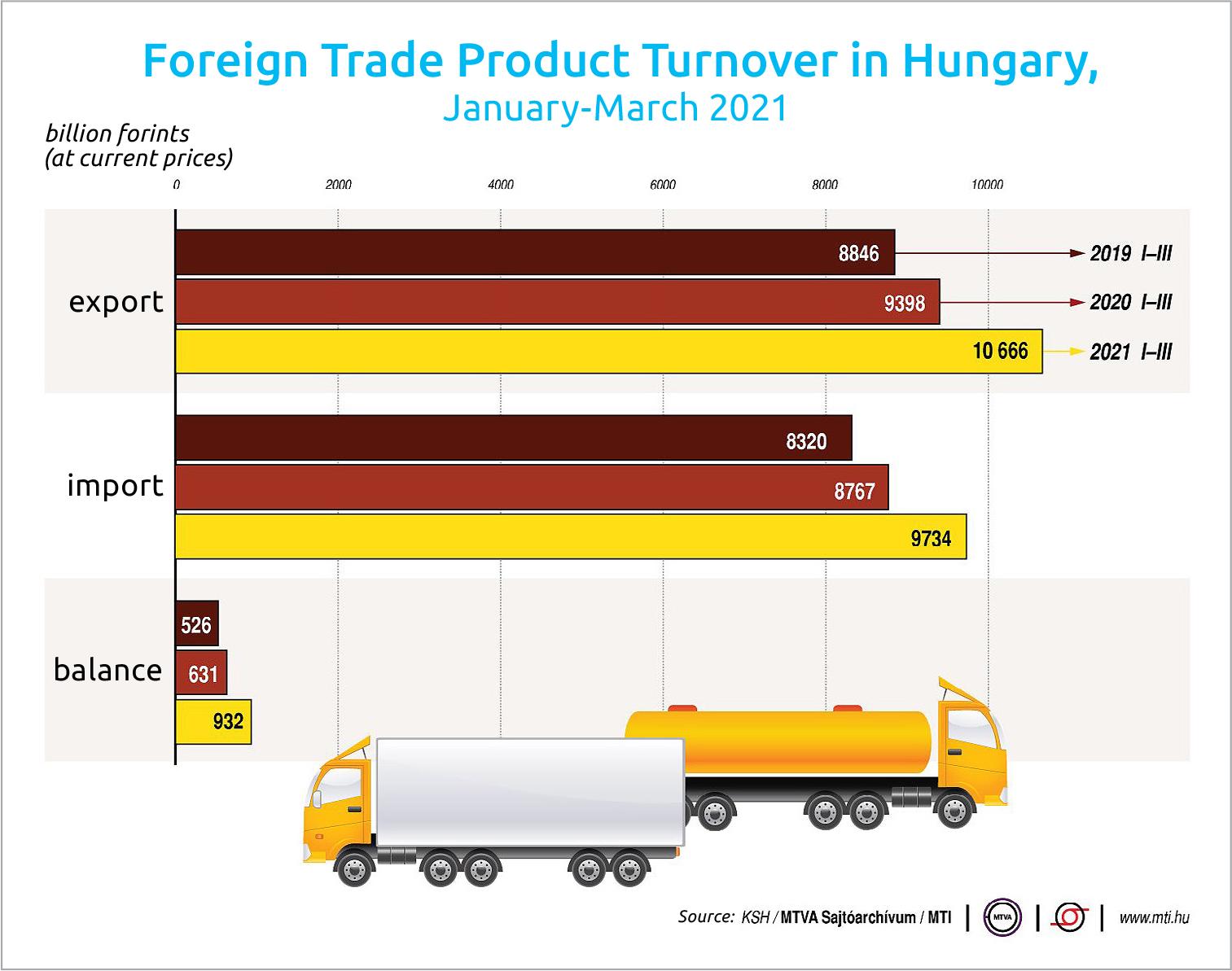2nd Reading Lifts GDP, Analysts’ Projections Alike

In light of the second reading of Q1 gross domestic product data, analysts have toned up their growth projections for the year; however, they warn that the pandemic still poses risks to the Hungarian economy. In the meantime, the central bank has hit a more hawkish tone.
Hungary’s first-quarter GDP growth was even more significant than the data showed at the first reading. As it turns out from the final data published by the Central Statistical Office (KSH) on June 1, the Hungarian economy expanded by 2% in the first three months of the year on a quarterly basis, as opposed to the 1.9% stated in the first release of the data two weeks ago.
According to the latest numbers published by the KSH, the volume of GDP lessened by 2.1% in Hungary in the first quarter of 2021 compared to the corresponding period of the previous year. Looking at seasonally and calendar adjusted and reconciled data, the economy’s performance rose 2% higher than in the previous quarter and was 1.6% lower than in the corresponding quarter of last year.
The performance of industry increased by 3.4%, within which that of manufacturing grew by 4.1% compared to the same period of the previous year. Among manufacturing branches, the most significant contributor to the growth was the increase in the making of electrical equipment. The value-added of construction lessened by 2.4%, while that of agriculture grew by 2.5% compared to the corresponding period of the previous year, KSH said.
The gross value added of services decreased by 3.5% in total on a yearly basis. Not surprisingly, the highest falls were in accommodation and food service activities (–47.7%), as well as transportation and storage (–11.1%).
On the expenditures side, the actual final consumption of households lessened by 3.7% compared to the same period of the previous year. Household final consumption expenditure, representing the largest proportion, decreased by 4.8%. The volume of social transfers in kind from the government became 1.3%, and the actual final consumption of the government was 10.4% higher. As a result of the above trends, actual final consumption became 1.6% lower.
Promising Picture
When looking at seasonally and calendar adjusted and reconciled data compared to the last quarter of 2020, the picture is rather promising. The performance of the economy grew by 2%, in terms of production, construction showed an outstanding 6% growth, while industry and services grew by 3.1% and 2.2%, respectively.
“When we saw the positive surprise in the first reading of data, at first we attributed it to the investment activity. We were wrong, as investment data showed a contraction on a quarterly basis,” said ING Bank head analyst Péter Virovácz, emphasizing that final consumption increased in spite of the strict restrictions due to the pandemic; thus, it might have added to the growth.
Another surprise was the industrial production, which, although it showed uneven performance, also contributed to the Q1 GDP data. The performance of the construction industry also surpassed expectations, Virovácz added.
All in all, the latest forecast by ING Bank predicts a massive 7.4% annual growth rate in 2021; if that happens, it would be the fastest growth rate based on current calculation methods.
The next quarter might bring growth on both a yearly and a quarterly basis, thinks Gábor Regős of Századvég Gazdaságkutató Zrt. Quarterly growth might be supported by the easing of restrictions, while annual expansion might benefit due to the low base effect of last year.
Risks Persist
As for the whole year, Hungarian GDP could grow by 5% or at an even faster pace, Regős says. However, risks due to the coronavirus persist and should not be underestimated.
The fact that the KSH modified its first reading of the data for the better shows that the Hungarian economy is continuing to catch up, says K&H Bank head analyst Dávid Németh. According to him, annual GDP growth might even exceed 6% this year.
While economic projections are becoming increasingly optimistic, inflation risks are mounting. In April, the consumer price index reached 5.1%, more than one percentage point higher than the upper limit of the central bank’s target. Unsurprisingly, the Monetary Council of the National Bank of Hungary (MNB) has already hinted at the possibility of a rate change. At its latest rate-setting meeting, it openly sent a hawkish message while, for the time being, keeping the base rate at 0.6% and also held all other instruments steady, in line with market expectations.
Looking ahead, however, the MNB stated that the upside risks to inflation associated with supply disruptions, higher commodity prices, and recovering activity had risen recently. Therefore, it struck a somewhat more aggressive tone than in its previous communiqué, stating that it stands ready to “tighten monetary conditions in a proactive manner to the extent necessary in order to ensure price stability and to mitigate inflation risks.”
Numbers to Watch in the Coming Weeks
On June 4, the day this paper is published, KSH will release April retail trade data. The following week will see two important macro figures: first, KSH will shed light on the April performance of Hungary’s industry on June 8, followed by the May consumer price index the next day. On June 15, we will discover how much the construction sector contributed in April to second-quarter GDP growth.
This article was first published in the Budapest Business Journal print issue of June 4, 2021.
SUPPORT THE BUDAPEST BUSINESS JOURNAL
Producing journalism that is worthy of the name is a costly business. For 27 years, the publishers, editors and reporters of the Budapest Business Journal have striven to bring you business news that works, information that you can trust, that is factual, accurate and presented without fear or favor.
Newspaper organizations across the globe have struggled to find a business model that allows them to continue to excel, without compromising their ability to perform. Most recently, some have experimented with the idea of involving their most important stakeholders, their readers.
We would like to offer that same opportunity to our readers. We would like to invite you to help us deliver the quality business journalism you require. Hit our Support the BBJ button and you can choose the how much and how often you send us your contributions.









